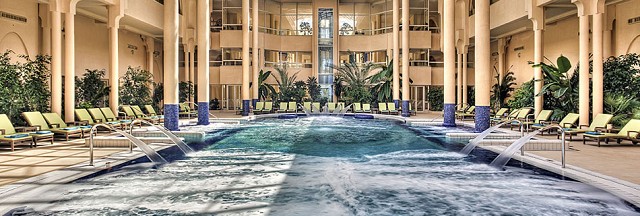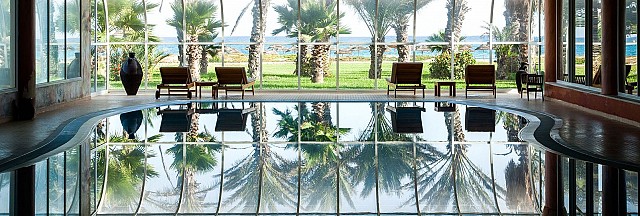Hydrotherapy in Tunisia
Hydrotherapy is the therapeutic use of water in all forms and ways. It has been know for millennia by the Egyptians, the Greeks and the Romans.
Water can be used in the form of ice, liquid or steam. The father of modern hydrotherapy is Abbey Kneipp (1821-1897). He developed more than 120 different uses of water for the purpose of maintaining and improving health. There are two major categories of hydrotherapy.
External applications:
- Baths (complete, half-bath, sitz bath, foot bath, arm bath, hand bath) in thermal water, sea water, swimming-pool, bathtub, saunas, etc...)
- Hot and cold packs (head, neck, leg, foot, etc...)
- Hot or cold compresses or by alternation.
- Affusions: water is slowly released from a hose.
- Frictions with a massage glove or a flannel.
- Jet showers.
Internal applications:
- Steam or water inhalation.
- Colon irrigation.
- Gargle.
- Enema.
- Water taken as a drink.
One should not think that hydrotherapy is a panacea. It is part of a more complex and demanding process. It must accompanied by a reconsideration of nutrition and lifestyle.
Basic principles
A healthy body has enough heat to accomplish different tasks. But when it is ill, blood is clogged and bad circulation sets in. Using cold or hot water or alternating both in hydrotherapy gives a bit of a boost to nature for a limited period so that the body can regain its autonomy. Hydrotherapy improves our adaptation capacity to better resist to diseases.
Water has three major functions :
- Dissolve impurities circulating in the blood.
- Decongest or eliminate what has been dissolved to enable the filtered blood to regain a regular circulation.
- Invigorate and fortify the weakened body.
Applications and objectives
The objectives of water therapeutic applications are as follows:
- dissolve harmful substances (hot herbal bath);
- eliminate morbid substances (compresses, affusions, wraps);
- fortify the body (cold baths, affusions).
Hot water applications
- dilate blood vessels;
- bring heat to the surface;
- reduce tension and muscular pain;
- appease;
- improve blood circulation and accelerate waste elimination;
- improve the defence system.
Cold water applications
- contract blood vessels;
- dispel the blood of congested or inflamed tissues;
- improve circulation;
- contribute to a better oxygenation and supply vital substances;
- tone up muscles;
- reduce inflammation;
- can be stimulating or appeasing.
Hydrotherapy involves three techniques:
- Balneotherapy
- Thermalism
- Thalassotherapy










